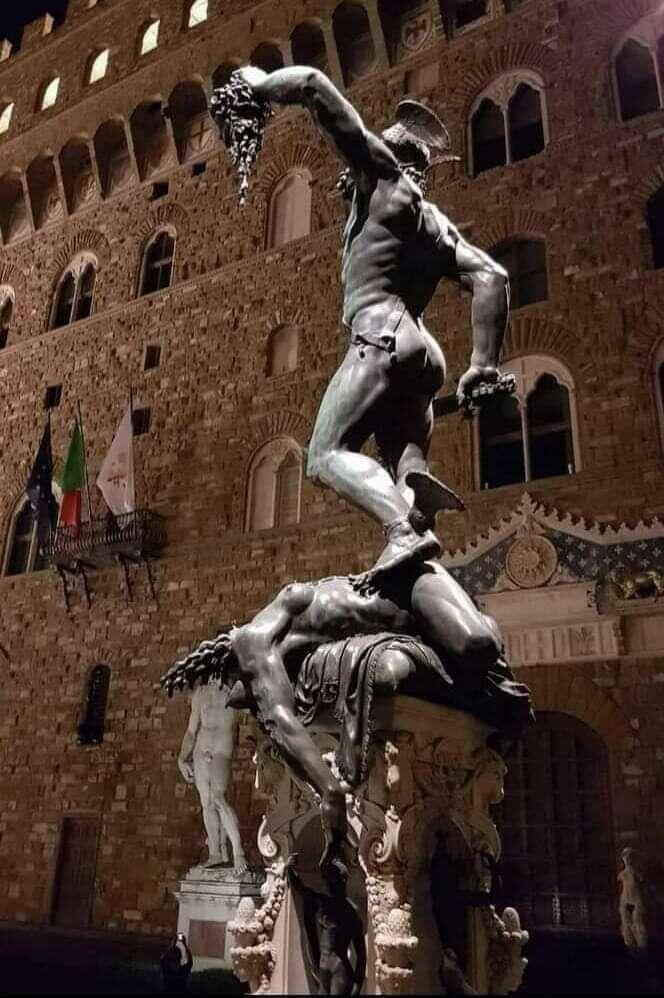NunyaBidness
posted
12 days ago
Has employment after January 2025.
The Fishcake🐶🐾
posted
12 days ago
GM🫂☕️😂🔥
The Fishcake🐶🐾
posted
12 days ago
NWC + Client that supports it = degeneracy unleashed 😂🫂🔥⚡️⚡️⚡️
e3a3420e:51765ce1
posted
12 days ago
Bitcoin currently trading at: $75370 USD #Bitcoin #BTC #nostr
arkinox
posted
12 days ago
The stage goes dark. A small crew comes out and prepares a table with a candlelit steak dinner. A fine glass of wine is poured and the waiter scurries off into the darkness.
The lights fade in as Gabe Newell emerges from the shadows. He doesn't acknowledge the audience, instead slowly walking over to the table, he puts on his bib and sits down.
Over the course of five to ten minutes, Gabe eats his steak and drinks his wine. He pays no attention to the audience still, he is focused solely on the delicious meal. When finished, he calmly stands up and wipes himself off. He walks to a podium. The spotlight follows him from above in an otherwise blackout room. Murmurs cease from the audience as he grasps the podium with both hands.
He looks into the audience silently and says nothing. He stares. Minutes pass. People shift uncomfortably. After what seems like forever, he lifts a hand from the edge of the podium and points it downward. His finger is pointing to a large red button. He hovers above it motionless for another few minutes. Then he presses it.
On the projector screen behind him, the blinding bright words flash on in the blackened theatre:
HALF LIFE 3 AVAILABLE NOW ON STEAM
The crowd goes absolutely nuts. Everyone is on their feet, screaming and applauding and cheering. But after several minutes of celebration, people begin to notice that Gabe has not moved since he pressed the button. Then suddenly, he raises his hand above the button once again and pauses. The crowd is now silent.
He presses the big red button again with a swift joust of his finger.
HALF LIFE 3 AVAILABLE NOW ON STEAM
FOR FREE
Everyone goes absolutely insane. People are jumping and a mosh pit forms toward the front of the room. Nobody even remembers where their seat is anymore.
But once again, after about 5 minutes of raucus celebrating, Gabe has still not moved a muscle. Once the crowd is silent, he raises his hand again and slams the button.
HALF LIFE 4 AVAILABLE NOW ON STEAM
FOR FREE
The crowd explodes with confused exuberance and people are laughing and taking pictures with their phones.
This time, Gabe doesn't wait. He presses the button again.
HALF LIFE 5 AVAILABLE NOW ON STEAM
FOR FREE
And again:
HALF LIFE 6 AVAILABLE NOW ON STEAM
FOR FREE
And again and again and again.
By the time the projector announces Half Life 17, the crowd is completely silent. Some people are crying. One person says "I just want to go home."
Gabe is visibly sweating. He presses the button one last time.
TEAM FORTRESS 3 AVAILABLE 2025 ON STEAM
And then he strolls off stage without a word.
NunyaBidness
reposted
12 days ago
{"id":"bb80e5345fccc8363e51f0aee8540ae55c37880b83dbf4354cae8eed04f304a7","sig":"6ad40f29f3521d640c50a84659dd14ce96a4a940df6e865d6b3afd72fa778d5faafa571c69713f23f35c1d9d622b9839d843fe3eee34b8ec6de45cfee1ad7421","kind":1,"tags":[["t","freeross"],["t","Ulbricht"]],"pubkey":"cbd2779fb1a3c661dc21e5444f8bf25c7a3485831840d4692bf1cc4d72a5b029","content":"https://primal.net/e/note1en9pyc9swdr7ngfngdpschh3jwr7647cvve4w5mu6ffmqv5r8fks0c6wtg https://https://cdn.satellite.earth/089232c5d6a3509f3552cf85ea7f7e155c5bdec0d04af29e1c7a6f0d25303c9c.jpg #freeross #Ulbricht","created_at":1730946221}
be9bb3c6:8f7b599a
posted
12 days ago
Every time I open nostr:npub18m76awca3y37hkvuneavuw6pjj4525fw90necxmadrvjg0sdy6qsngq955 I see people changing the world. That’s pretty cool. Thank you all for adding so much.
GN, Nostr. Much love!
37f2654c:3c48723a
posted
12 days ago
“Moderator” ban in 3, 2, done! 🤪
elsat
posted
12 days ago
They have valid objections.
Some want a private echo chamber.
Many see nostr as in the screenshot below:
They hold these beliefs, while trusting yet another VC funded walled garden. 

Evan
posted
12 days ago

The Fishcake🐶🐾
posted
12 days ago
It worked! 😂🔥🫂
The Fishcake🐶🐾
posted
12 days ago
😂😂😂
The Fishcake🐶🐾
posted
12 days ago
GM😂🫂☕️
walker
posted
12 days ago
nostr:npub10qrssqjsydd38j8mv7h27dq0ynpns3djgu88mhr7cr2qcqrgyezspkxqj8 x NIPS IRL
toxicbitcoiner
posted
12 days ago
Found this one 

atyh
posted
12 days ago
and i don’t believe the root is nefarious. i believe its immature.
its a reformation of the Silicon Valley dream of fortune and fame.
Unless everybody uses your project, youve “lost”. Its immature, Silicon Valley bro thinking.
It ironically mirrors the behavior of the American Democrats, seeking the approval of everyone outside the country, resulting in them getting their asses handed to them.
Nostr doesnt need to “win”. It needs to become stable, reliable, and consistent. The root subculture of wanting to live according to hype, “we will dominate the world” bro stuff, and feeling cutting edge excitement all the time is not just unrealistic, it will destroy project momentum through fragmentation and burnout.
its why i personally believe people like nostr:npub1xtscya34g58tk0z605fvr788k263gsu6cy9x0mhnm87echrgufzsevkk5s and nostr:npub1jlrs53pkdfjnts29kveljul2sm0actt6n8dxrrzqcersttvcuv3qdjynqn are carrying nostr in more ways than people realize. they just do the work everyday.
walker
reacted
12 days ago
🤙
walker
reacted
12 days ago
🤙
walker
reacted
12 days ago
🤙
hodlcuban
reposted
12 days ago
{"id":"1f406e0f67704bdd0fa1d565b6ec9d9bec604897ecfe87827e055e35a9cbdba5","pubkey":"f4d89779148ccd245c8d50914a284fd62d97cb0fb68b797a70f24a172b522db9","created_at":1730937466,"kind":1,"tags":[["r","https://i.nostr.build/U5YVQ7hIX1KabFeF.jpg"],["imeta","url https://i.nostr.build/U5YVQ7hIX1KabFeF.jpg","m image/jpeg","alt Verifiable file url","x da189d2ad8c699c57645f3df86b18c0bea99ef318f2ff1550dd79e5f298c2f24","size 39836","dim 918x474","blurhash i7FEv65R00}X00_2=y57$*0}9G=d_3RjZ$bvOX%200kC_3i_%~%M=HIUV@IAt,-;Hray$*57OY$*~q%MR5WAE2a{xaM{,=","ox 1395dc12e995876e14173b063d4bd648a6a551b8da622a6af0cdd7295dda7854"]],"content":"https://i.nostr.build/U5YVQ7hIX1KabFeF.jpg","sig":"3297df292f0c42e0e9aa38e50429b77d0ad7a41ff52cfa34dfea5d68cc1d8732f1791a34b62a797495986fd74d6245fc847c4de98076fecd1cfd0c148d68fa63"}
lvlick
posted
12 days ago
https://video.nostr.build/6098afc8de52fc1d99eff3b3bae4dc8109ecb809d321ac87defbdd3b3f310e9b.mp4
Good morning, How are you today
“Grandpa asked me how to say ‘ไปไหน’ where are you going in English.”
#siamstr #HPP #Huaiphuengproject #nostr #v4v #p2p #lightning #zap #localthailand #huaiphueng #kalasin #thailand #bitcoin #plebchain #runningbitcoin #ecosystem #wherostr #bitcoinhub #bitcoinasia #nostrasia
The Fishcake🐶🐾
posted
12 days ago
GM🫂☕️🔥
0f389bba:9b3f148f
posted
12 days ago
🌊 SURF 'N TURF 🏝️
-THE ISLAND LIFE-
 Benvenuto Cellini, "Perseus with the head of Medusa" (1545-1554), bronze sculpture, height (with pedestal) 519 cm. - Loggia dei Lanzi, Florence
"Perseus with the head of Medusa" is a bronze sculpture by Benvenuto Cellini, considered a masterpiece of Italian Mannerist sculpture, and is one of the most famous statues in Piazza della Signoria in Florence.
Placed under the Loggia dei Lanzi, the sculpture represents Perseus standing on the body of Medusa, just beheaded with the sword held in her right hand, while the left raises triumphantly the head of the monster held by the hair.
Placed on a high pedestal decorated with beautiful bronzes, it was designed to look down on the viewer. Together with the group of the rape of the Sabines, by Giambologna, it is the only statue preserved in the Logge dell'Orcagna to have been expressly conceived for that location.
The pedestal, removed in the twentieth century and replaced with a copy, is a masterpiece in itself: in the fineness of the small bronze statues representing divinities connected to the myth of Perseus, all the skill of Cellini as a goldsmith in small-scale work is manifested.
Commissioned by Cosimo I after his inauguration as Duke of the city, it was built between 1545 and 1554. The statue that can be admired today is the original one and was moved only on the occasion of a thorough cleaning and restoration which ended in 1998. Directly connected in terms of the nearby Judith and Holofernes by Donatello, in reality it deeply diverges from the measure of the early Renaissance embracing the marked Titanism typical of the period called Mannerism, when the sculptors imitated the grandiose works of Michelangelo.
The Perseus also has a political significance, like most of the statues placed on the square: it represents the affirmation of the Duke who gives a "cut" to the republican experiences, represented by Medusa. In fact, snakes emerge from Medusa's body, an allusion to the proverbial city discords that had always undermined a true democracy.
Perseus is made up of only three pieces (or four, counting the sword); the hero's body, the body of the Medusa, on which Perseus rests his feet, and the head of the Medusa, which Cellini reports in his Life to have cast as an experiment for the rest of the group.
The fusion of Perseus was very complex and put Cellini and his assistants to the test. As it is told in the artist's autobiography, it was an almost "epic" operation, with the sculptor suffering from fevers and sweating (perhaps a melter's fever caused by the exhalations of metals and also documented in other cases), the fire of a furnace that had lowered due to a storm, then the supposed insufficiency of the tin, which Cellini allegedly remedied by throwing all the household dishes into the casting, and finally a start of fire in the shop.
Despite the fame, mainly due to the circumstances of the fusion, critics are far from unanimous in acclaiming Perseus as a masterpiece of mannerism; The statue is attributed to its languid pose and excessive attention to detail, typical of the goldsmith who ultimately took over the sculptor. In particular, critics highlight how much the two preserved sketches, one in wax and one in bronze , both at the National Museum of the Bargello, are superior for plasticity and inventiveness in laying. "
Credits goes to the respective
Author ✍️/ Photographer📸
🐇 🕳️
#Bitcoin #Satoshis #Freedom #Apocalypse #Music #Movies #Philosophy #Literature
#Grownostr #Stoicism #Nature
APOCALYPSE ANONYMOUS by
ATOSHI ANARKOMOTO
Benvenuto Cellini, "Perseus with the head of Medusa" (1545-1554), bronze sculpture, height (with pedestal) 519 cm. - Loggia dei Lanzi, Florence
"Perseus with the head of Medusa" is a bronze sculpture by Benvenuto Cellini, considered a masterpiece of Italian Mannerist sculpture, and is one of the most famous statues in Piazza della Signoria in Florence.
Placed under the Loggia dei Lanzi, the sculpture represents Perseus standing on the body of Medusa, just beheaded with the sword held in her right hand, while the left raises triumphantly the head of the monster held by the hair.
Placed on a high pedestal decorated with beautiful bronzes, it was designed to look down on the viewer. Together with the group of the rape of the Sabines, by Giambologna, it is the only statue preserved in the Logge dell'Orcagna to have been expressly conceived for that location.
The pedestal, removed in the twentieth century and replaced with a copy, is a masterpiece in itself: in the fineness of the small bronze statues representing divinities connected to the myth of Perseus, all the skill of Cellini as a goldsmith in small-scale work is manifested.
Commissioned by Cosimo I after his inauguration as Duke of the city, it was built between 1545 and 1554. The statue that can be admired today is the original one and was moved only on the occasion of a thorough cleaning and restoration which ended in 1998. Directly connected in terms of the nearby Judith and Holofernes by Donatello, in reality it deeply diverges from the measure of the early Renaissance embracing the marked Titanism typical of the period called Mannerism, when the sculptors imitated the grandiose works of Michelangelo.
The Perseus also has a political significance, like most of the statues placed on the square: it represents the affirmation of the Duke who gives a "cut" to the republican experiences, represented by Medusa. In fact, snakes emerge from Medusa's body, an allusion to the proverbial city discords that had always undermined a true democracy.
Perseus is made up of only three pieces (or four, counting the sword); the hero's body, the body of the Medusa, on which Perseus rests his feet, and the head of the Medusa, which Cellini reports in his Life to have cast as an experiment for the rest of the group.
The fusion of Perseus was very complex and put Cellini and his assistants to the test. As it is told in the artist's autobiography, it was an almost "epic" operation, with the sculptor suffering from fevers and sweating (perhaps a melter's fever caused by the exhalations of metals and also documented in other cases), the fire of a furnace that had lowered due to a storm, then the supposed insufficiency of the tin, which Cellini allegedly remedied by throwing all the household dishes into the casting, and finally a start of fire in the shop.
Despite the fame, mainly due to the circumstances of the fusion, critics are far from unanimous in acclaiming Perseus as a masterpiece of mannerism; The statue is attributed to its languid pose and excessive attention to detail, typical of the goldsmith who ultimately took over the sculptor. In particular, critics highlight how much the two preserved sketches, one in wax and one in bronze , both at the National Museum of the Bargello, are superior for plasticity and inventiveness in laying. "
Credits goes to the respective
Author ✍️/ Photographer📸
🐇 🕳️
#Bitcoin #Satoshis #Freedom #Apocalypse #Music #Movies #Philosophy #Literature
#Grownostr #Stoicism #Nature
APOCALYPSE ANONYMOUS by
ATOSHI ANARKOMOTO
 Benvenuto Cellini, "Perseus with the head of Medusa" (1545-1554), bronze sculpture, height (with pedestal) 519 cm. - Loggia dei Lanzi, Florence
"Perseus with the head of Medusa" is a bronze sculpture by Benvenuto Cellini, considered a masterpiece of Italian Mannerist sculpture, and is one of the most famous statues in Piazza della Signoria in Florence.
Placed under the Loggia dei Lanzi, the sculpture represents Perseus standing on the body of Medusa, just beheaded with the sword held in her right hand, while the left raises triumphantly the head of the monster held by the hair.
Placed on a high pedestal decorated with beautiful bronzes, it was designed to look down on the viewer. Together with the group of the rape of the Sabines, by Giambologna, it is the only statue preserved in the Logge dell'Orcagna to have been expressly conceived for that location.
The pedestal, removed in the twentieth century and replaced with a copy, is a masterpiece in itself: in the fineness of the small bronze statues representing divinities connected to the myth of Perseus, all the skill of Cellini as a goldsmith in small-scale work is manifested.
Commissioned by Cosimo I after his inauguration as Duke of the city, it was built between 1545 and 1554. The statue that can be admired today is the original one and was moved only on the occasion of a thorough cleaning and restoration which ended in 1998. Directly connected in terms of the nearby Judith and Holofernes by Donatello, in reality it deeply diverges from the measure of the early Renaissance embracing the marked Titanism typical of the period called Mannerism, when the sculptors imitated the grandiose works of Michelangelo.
The Perseus also has a political significance, like most of the statues placed on the square: it represents the affirmation of the Duke who gives a "cut" to the republican experiences, represented by Medusa. In fact, snakes emerge from Medusa's body, an allusion to the proverbial city discords that had always undermined a true democracy.
Perseus is made up of only three pieces (or four, counting the sword); the hero's body, the body of the Medusa, on which Perseus rests his feet, and the head of the Medusa, which Cellini reports in his Life to have cast as an experiment for the rest of the group.
The fusion of Perseus was very complex and put Cellini and his assistants to the test. As it is told in the artist's autobiography, it was an almost "epic" operation, with the sculptor suffering from fevers and sweating (perhaps a melter's fever caused by the exhalations of metals and also documented in other cases), the fire of a furnace that had lowered due to a storm, then the supposed insufficiency of the tin, which Cellini allegedly remedied by throwing all the household dishes into the casting, and finally a start of fire in the shop.
Despite the fame, mainly due to the circumstances of the fusion, critics are far from unanimous in acclaiming Perseus as a masterpiece of mannerism; The statue is attributed to its languid pose and excessive attention to detail, typical of the goldsmith who ultimately took over the sculptor. In particular, critics highlight how much the two preserved sketches, one in wax and one in bronze , both at the National Museum of the Bargello, are superior for plasticity and inventiveness in laying. "
Credits goes to the respective
Author ✍️/ Photographer📸
🐇 🕳️
#Bitcoin #Satoshis #Freedom #Apocalypse #Music #Movies #Philosophy #Literature
#Grownostr #Stoicism #Nature
APOCALYPSE ANONYMOUS by
ATOSHI ANARKOMOTO
Benvenuto Cellini, "Perseus with the head of Medusa" (1545-1554), bronze sculpture, height (with pedestal) 519 cm. - Loggia dei Lanzi, Florence
"Perseus with the head of Medusa" is a bronze sculpture by Benvenuto Cellini, considered a masterpiece of Italian Mannerist sculpture, and is one of the most famous statues in Piazza della Signoria in Florence.
Placed under the Loggia dei Lanzi, the sculpture represents Perseus standing on the body of Medusa, just beheaded with the sword held in her right hand, while the left raises triumphantly the head of the monster held by the hair.
Placed on a high pedestal decorated with beautiful bronzes, it was designed to look down on the viewer. Together with the group of the rape of the Sabines, by Giambologna, it is the only statue preserved in the Logge dell'Orcagna to have been expressly conceived for that location.
The pedestal, removed in the twentieth century and replaced with a copy, is a masterpiece in itself: in the fineness of the small bronze statues representing divinities connected to the myth of Perseus, all the skill of Cellini as a goldsmith in small-scale work is manifested.
Commissioned by Cosimo I after his inauguration as Duke of the city, it was built between 1545 and 1554. The statue that can be admired today is the original one and was moved only on the occasion of a thorough cleaning and restoration which ended in 1998. Directly connected in terms of the nearby Judith and Holofernes by Donatello, in reality it deeply diverges from the measure of the early Renaissance embracing the marked Titanism typical of the period called Mannerism, when the sculptors imitated the grandiose works of Michelangelo.
The Perseus also has a political significance, like most of the statues placed on the square: it represents the affirmation of the Duke who gives a "cut" to the republican experiences, represented by Medusa. In fact, snakes emerge from Medusa's body, an allusion to the proverbial city discords that had always undermined a true democracy.
Perseus is made up of only three pieces (or four, counting the sword); the hero's body, the body of the Medusa, on which Perseus rests his feet, and the head of the Medusa, which Cellini reports in his Life to have cast as an experiment for the rest of the group.
The fusion of Perseus was very complex and put Cellini and his assistants to the test. As it is told in the artist's autobiography, it was an almost "epic" operation, with the sculptor suffering from fevers and sweating (perhaps a melter's fever caused by the exhalations of metals and also documented in other cases), the fire of a furnace that had lowered due to a storm, then the supposed insufficiency of the tin, which Cellini allegedly remedied by throwing all the household dishes into the casting, and finally a start of fire in the shop.
Despite the fame, mainly due to the circumstances of the fusion, critics are far from unanimous in acclaiming Perseus as a masterpiece of mannerism; The statue is attributed to its languid pose and excessive attention to detail, typical of the goldsmith who ultimately took over the sculptor. In particular, critics highlight how much the two preserved sketches, one in wax and one in bronze , both at the National Museum of the Bargello, are superior for plasticity and inventiveness in laying. "
Credits goes to the respective
Author ✍️/ Photographer📸
🐇 🕳️
#Bitcoin #Satoshis #Freedom #Apocalypse #Music #Movies #Philosophy #Literature
#Grownostr #Stoicism #Nature
APOCALYPSE ANONYMOUS by
ATOSHI ANARKOMOTO
The Fishcake🐶🐾
posted
12 days ago
FFS, the test is over! THANK YOU! I am yet to figure out how to connect Damus to it so I can zap back! STAAAHP! 😂😭😭😭🙏🏻🫂🔥⚡️  nostr:note1kua9n8gh0h87sav9mcfrdl4q45tct30nsvxmlszaf0p4e4qf48lqqqeg4q
nostr:note1kua9n8gh0h87sav9mcfrdl4q45tct30nsvxmlszaf0p4e4qf48lqqqeg4q
 nostr:note1kua9n8gh0h87sav9mcfrdl4q45tct30nsvxmlszaf0p4e4qf48lqqqeg4q
nostr:note1kua9n8gh0h87sav9mcfrdl4q45tct30nsvxmlszaf0p4e4qf48lqqqeg4q
be9bb3c6:8f7b599a
reacted
12 days ago
🔥